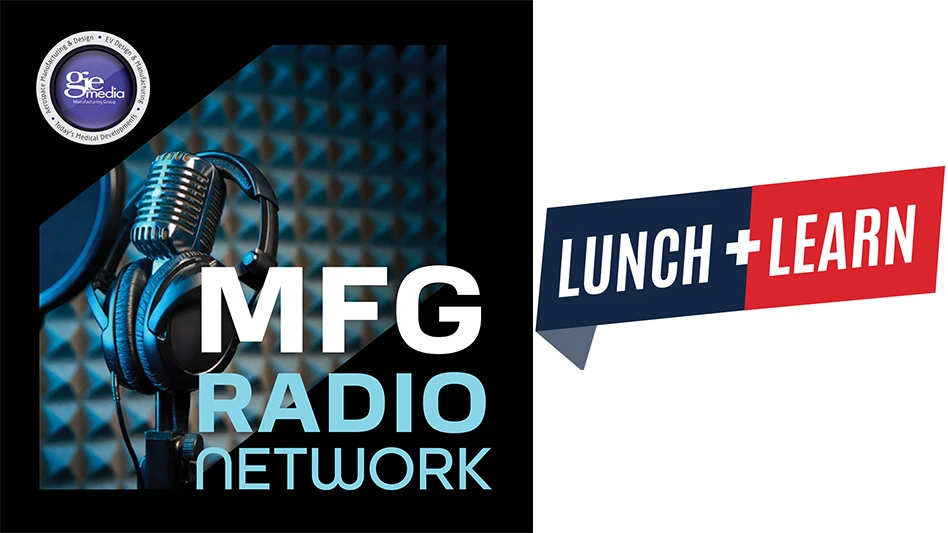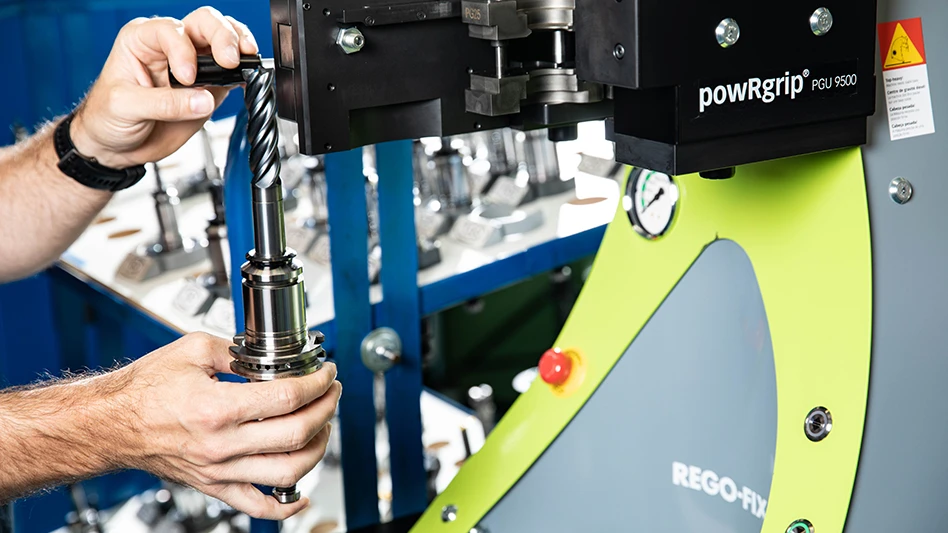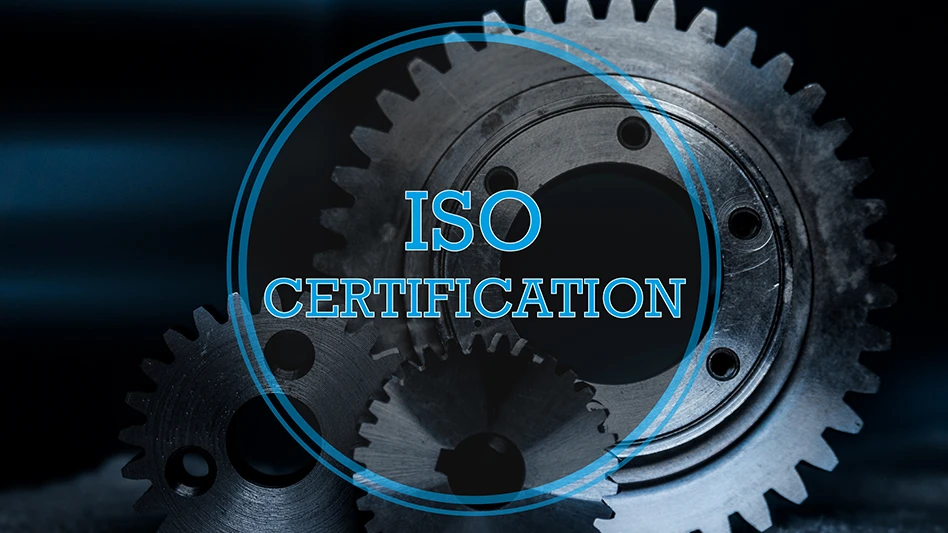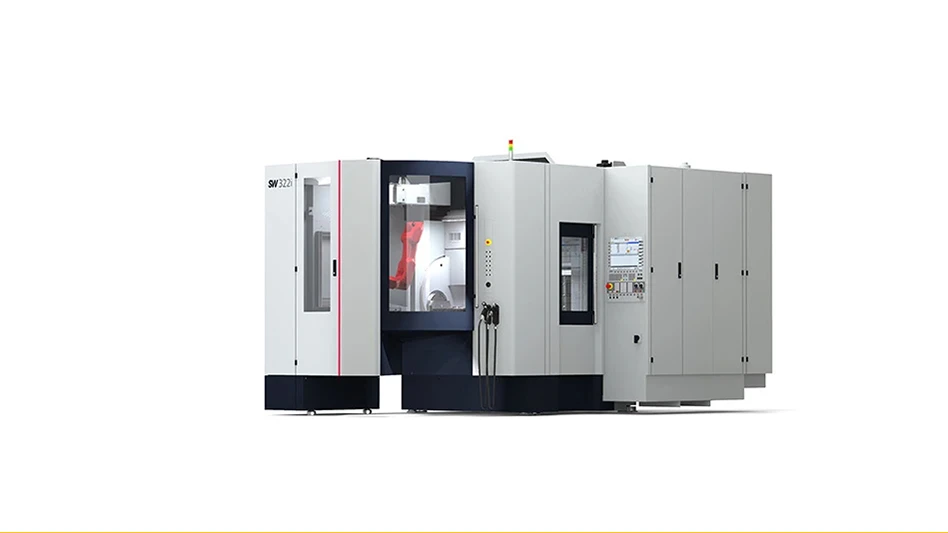 The idea for a new medical implant normally arises to meet a practical need. It is a long process before the implant is producible in quantity: Taking approximately 12 to 18 months from the first drawing, including the design and job planning, through the completed, approved implant.
The idea for a new medical implant normally arises to meet a practical need. It is a long process before the implant is producible in quantity: Taking approximately 12 to 18 months from the first drawing, including the design and job planning, through the completed, approved implant.
"After receiving, for example, a request for a new product from an orthopedist, we first design and develop a prototype," explained Hans-Joachim Mahr, production manager at implantcast Corp. in Buxtehude, Germany (see sidebar). "The CNC controller assumes an important function for the transfer of the CAD/CAM data to the actual production. It supports the idea and the virtual model in a workpiece that the orthopedist then can hold in his hands for the first time."
The stock-removal process is the typical manner for manufacturing artificial bones made of titanium. At implantcast, for example, the production of hip implants runs on DMG turning-milling centers equipped with the Siemens CNC Sinumerik 840D sl.
Each implant also has an associated, specially tailored set of instruments required for the implantation. This includes, for example, a surgical rasp used to prepare the bone.
Because its powerful machine functionality is suitable for both complex single parts and large production runs, not only the quantity production, but also the production of one-offs runs on the same machine. The fast data processing of the 840D sl is a particular advantage for the standard implants produced in quantity. implantcast also offers, for particularly complicated applications such as cancer patients, the manufacturing of patient-specific implants. In this case, cutting of the implants are to the associated bone structure with the help of a CT or MRI picture. For this single part production, implantcast uses the comprehensive setup functions of the Sinumerik that permit the fast machine setup.
 Powerful cycles support the programming and setup for turning-milling machines with integrated B axis. Powerful cycles support the programming and setup for turning-milling machines with integrated B axis. |
For example, the CNC user interface has, on all levels, self-explanatory icons that are configurable as popular keys. Furthermore, many intelligent functions are available that assist the measuring of tools and workpieces. These measuring functions can be used both for the setup and process measurement, that is, the overall quality assurance during the machining. The Sinumerik Operate user interface also integrates simple swivel commands that simplify the machine setup. Characterized by its easy handling, despite its high-level functionality is the Cycle 800's swivel cycle. The swivel functions are available both for the swiveling in a machine axis and in an axis of the workpiece coordinate system. The CNC also handles, immediately, any required coordinate transformation.
Irrespective of the one-off or quantity run, the highest demands are on each individual medical engineering workpiece. Rigorous quality and precision standards ensure there is no letdown. Furthermore, the manufacturer is responsible for validating the complete production process, which means that even prototype construction must satisfy the same conditions as the subsequent volume runs.

Twelve Standard Sizes
The number of artificial bone implants is increasing continually, while operations such as the use of a replacement hip made of titanium also belong to the standard daily program in orthopedic surgery today. Implanted in the United States in 2010 were one million artificial hip and knee joints. Forecasts expect this number to exceed four million by 2030. This large number, however, does not obviate the fact that the highest demands are placed on each individual medical implant, whether a one-off or production run.
 Dual-channel representation in the CNC simulation brings transparency to the programming and the setup, even for complex workpieces. Dual-channel representation in the CNC simulation brings transparency to the programming and the setup, even for complex workpieces. |
Standard implants are now available in various sizes as required for the physique of the patient. The NC programming that defines the functions for machining the workpiece, and consequently includes all associated details concerning the form and technology, is very fast.
"Thanks to the user-friendly Sinumerik Operate, we save a significant amount of time," explains Axel Robiller, manager of the stock removal department at implantcast. "One reason is that the human-machine interface (HMI) has the familiar Windows style known to us from the PC world."
The Sinumerik 840D sl provides a comprehensive range of powerful turning and milling cycles. Because support for all operator functions and cycles are with animated elements, the operator intuitively knows the functions use without needing to consult the instruction manual. When the animated elements do not suffice to explain the purpose of the individual input values, such as the parameterization of complex cycles, the Dynamic vector graphics is used. These graphics reflect the current input values with their proportional representation.
Economically Efficient
At EMO 2011 in Hanover, Germany, Siemens presented a dual-channel production of bone rasps on machines with two slides. This allows turning-milling centers, such as the DMG CTX alpha 450TC, to operate even more effectively, because the complete programming functionality is available in both channels. The Programsync function synchronizes the machining channels, whether or not the programs are in DIN/ISO, standard cycles, or the Siemens software ShopTurn.
The increasing complexity of the turning-milling machines, and the possible production programs, also increase the risk of programming errors that, under some circumstances, can cause machine damage. For this purpose, the Sinumerik 840D sl offers a program simulation that shows the stock removal process in virtual 3D. In addition to the complete representation of the cutting actions, the expected machining time corresponding to the programmed technology values displays, before the production of a single workpiece.
 DMG turning-milling center equipped with the Sinumerik 840D sl CNC controller technology. DMG turning-milling center equipped with the Sinumerik 840D sl CNC controller technology. |
A short machining time, however, is critical for the economy of quantity production. The turning-milling center with the Siemens 840D sl used at implantcast, with cross-slides for the Y and B axis, permits 5-axis simultaneous machining, significantly reducing the processing time. In a single operation, with parallel machining on the main- and counter-spindles, is the implant manufacturing. For the complete machining, the Sinumerik 840D sl provides turning-milling functions used in combination. The complete scope of all milling functions is available here – from the cycle technology to the simultaneous free surface machining.
Simple Parts do not Exist
Bone rasps are an example of very complex workpieces, because their basic form represents a significant challenge in machining, namely, a rasp body with many rasp teeth located on the contoured outer surfaces. The Sinumerik MDynamics technology package ensures the required surface quality at high machining speed. Even for difficult materials, the Advanced Surface motion control produces milling results that meet the stringent requirements placed on medical implants and instruments.
Each individual part undergoes a comprehensive quality control. Sensing probes check the accuracy of the contour and the peak-to-valley height, and scan the surface for even the smallest damage. To check the material structure, X-ray examinations occur on some parts. The implants pass to the internal department at implantcast for sterile packaging and subsequent shipping, once overcoming all hurdles.
Patiently Waiting
A patient with bone prostheses receives a prosthesis pass. This document allows reconstruction of the complete manufacturing process of the prosthesis at any time. Whereas in other industry sectors, such as the automotive or food processing industry, tracked batch-related tracking is necessary, tracking requirements in the orthopedic world is specific to each individual patient's medical implant. This is a major challenge, considering implantcast produces approximately 3,000 items each week.
Despite the extensive use of highly sophisticated technology, at the end of the process chain there is a suffering patient who requires help. This difference between the manufacturer of turned, milled and ground parts used in the medical technology and one that produces parts for machinery construction makes itself apparent, for example, when Hans-Joachim Mahr himself delivers a package to the post office, late in the afternoon. The trip to the post office is not actually part of his job.
"The patient whose prosthesis is in the package would need to wait one day longer for his/her operation, were we not to act immediately," Mahr explains.
For such very late requests, and these occur frequently, it is quite possible that he will personally start the prosthesis on its journey to a patient in need.
DMG, Hoffman Estates, IL
Siemens Industry Inc., Elk Grove Village, IL
usa.siemens.com/cnc
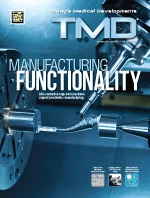
Explore the November December 2011 Issue
Check out more from this issue and find your next story to read.
Latest from Today's Medical Developments
- Tariffs threaten small business growth, increase costs across industries
- Feed your brain on your lunch break at our upcoming Lunch + Learn!
- Robotics action plan for Europe
- Maximize your First Article Inspection efficiency and accuracy
- UPM Additive rebrands to UPM Advanced
- Master Bond’s LED415DC90Med dual-curable adhesive
- Minalex celebrates 60 years of excellence in miniature aluminum extrusions
- Tormach’s Chip Conveyor Kit for the 1500MX CNC Mill
